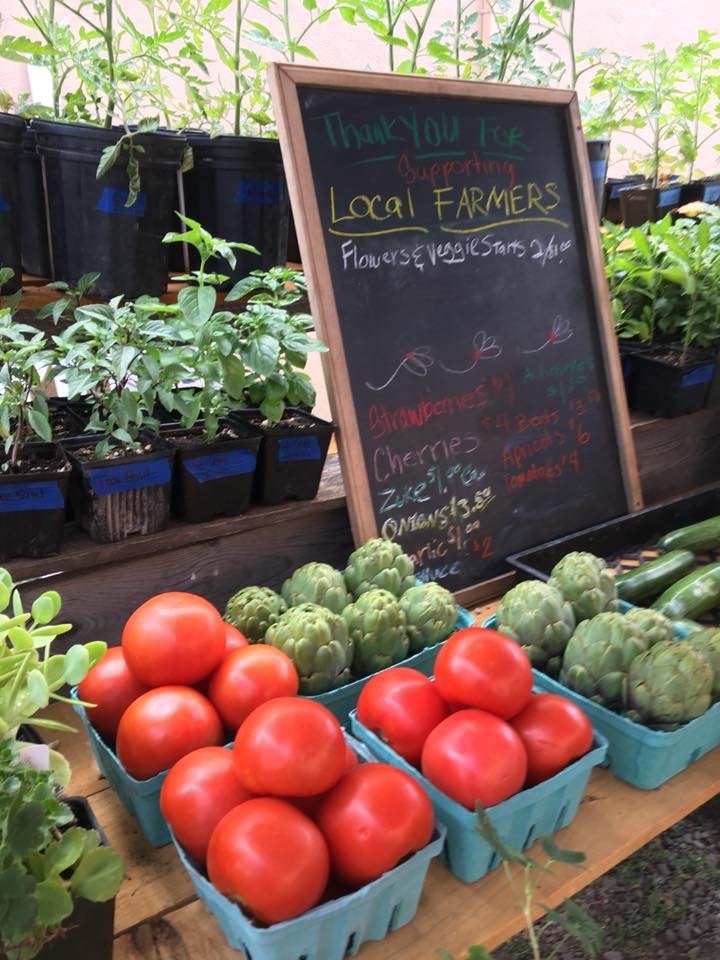
The OFMA Resource Library
Brand & Marketing Toolkit
Owned, Earned & Paid Media
It’s time to get the word out! How do you create strategies to promote your market to the community as well as showcase and support the small businesses vending at your market? Building your own audience, tapping into the audiences built by other groups, and (strategically!) spending your dollars to tap into new audiences are three ways to make sure the community knows how great your market is and everything you have to offer.
This Chapter Includes:
What is owned vs. earned vs. paid media?
3 Steps for Using Owned, Earned & Paid Media
Hands-on Exercise: Picking Your Target Audience
Tools & Resources
Tips, Tricks & Definitions
What is owned vs. earned vs. paid media?
Paid media is content (written stories, photography, video, etc.) that you pay money to advertise to an audience, but owned and earned media are both free. Owned media is content you create yourself, like managing your own website or social media accounts, and earned media is content others create about you, like a news story or a customer review online.
Owned Media - You own how the information is put out into the world.
Earned Media - You ask others to put the information out for you.
Paid Media - You pay others to put the information out for you.
Tip: Don’t skip ahead to paid media.
We don’t have to spend our limited dollars to reach new people! Follow the three steps below to learn how you can build your own audience and tap into the audiences others have created using your time (vs. your dollars!) before you take the leap to pay for advertising.
/ Step One
Build your owned media.
Start to build your own audience first! The more you are able to invest in creating connection and community on your own platforms (typical platforms include website, social media accounts, and email), the less time and dollars you need to invest into earned and paid media activities (more on those below!). Building up your own audience means you can share stories and information in real-time, and you aren't as dependent on others to support you in getting the word out.
We recommend that all farmers markets aim to have: Basic Website (Squarespace is a great starter platform!); Facebook Page; Email list (Mailchimp); Stretch Goal: Instagram Account.
Tip: The vendors at your market also have owned audiences for their businesses. Collaborate with them on messaging, images, and timing for marketing pushes. For example, if you have an event coming up at the market, coordinate with your vendors to share invitations with the same language, graphics, and around the same time. Better coordination leads to more buzz - and a clearer understanding for your community about the reasons why they should frequent your market.
// Step Two
Amplify your stories with earned media.
The most commonly used earned media strategy for farmers markets is to work to get free press coverage about the market, a vendor, or an event or program. Radio stations, newspapers, TV stations and even popular social media accounts can be sources of earned media. This marketing strategy is valuable to farmers markets because it is a no-cost way to reach a wide audience within their community and promote their market. As the trend of highlighting local foods has gained popularity, media outlets have become extremely receptive to giving air time and print space to farmers markets in their areas. Tap into this important marketing resource.
If you want to explore this option, download our Media Outreach Guide.
/// Step Three
Reach new audiences with paid media.
Where do people in your community who are likely to shop at your market go for the latest information and news? If you choose to invest dollars into advertising, make sure that the audience you want to reach is getting their information through that platform.
A lower-cost way to reach new audiences with paid advertising is to put small amounts of money behind your social media posts to ensure they are reaching larger numbers of people. When you advertise using social media, there is also a greater likelihood that the people you are reaching will become part of your owned audience. For example, people who see your boosted post on Facebook may decide to follow your Facebook page.

Hands-on Exercise: Defining Your Target Audience
With so many different ways to reach out to people in your community, how do you choose where to spend your time? Should you focus on building a following on Facebook? Recruit your vendors to take photos for your Instagram? Run an advertisement in the local newspaper?
It all depends on your target audience and the way that they like to get their information. Make sure that you’re showing up in the spaces where your target audience gets their information. The best way to find out your target audience is to speak with the audience you already have and ask them who they are and why they care about your farmers market. Connect with your vendors, volunteers, and repeat customers and look for common themes in demographics, why they care about the market, where they get their informaiton, and more. Use this example survey as a guide.
Tools /Resources
Survey
Use the questions in this audience survey to gain insights about the people best connected to your market.
Research
Social Media Examiner is one of the most extensive and trusted websites sharing the latest trends and information on how to use social media for your business.
Media Outreach
Follow the steps in this guide to create and distribute a press release to local media sources like television, newspaper, and radio.
Explore the Toolkit
-

Marketing & Branding 101
-

Brand Strategy & Development
-

Print: Signage & Environmental Graphics
-

Digital: Managing Your Online Presence
